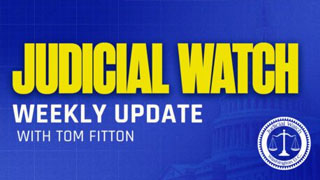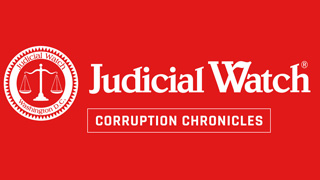
Why Whitewater Matters
Aficionados of complex financial crime will want a look at a new, never-before-seen document obtained by Judicial Watch. Last month, Judicial Watch released 246 pages of previously undisclosed Office of Independent Counsel (OIC) internal memos on criminal charges against Hillary Clinton in the Whitewater investigation.
On February 9, this reporter provided more details on the case, based on a newly obtained confidential document. The document included a description of the case against Mrs. Clinton “in the legal terms of an indictment.”
The new document, disclosed today by Judicial Watch, goes further. A thirty-two page OIC memo titled “HRC Order of Proof,” it spells out in great detail the evidence that would have been presented at Mrs. Clinton’s trial.
The April 1998 memo includes the names of 121 witnesses, discussions of evidence, and aspects of grand jury testimony to be used at trial, forming a virtual road map to the sweeping criminal case against the Whitewater conspirators. It’s a rare inside look at a major federal case on the brink of indictment.
Prosecutors ultimately decided not to indict Mrs. Clinton, calculating that they could not win the complicated, largely circumstantial case against such a high-profile figure. But while the general outline of the case is known, the “Order of Proof” is definitive, nailing down forever a number of disputed issues. Among them:
— The cover-up of Clinton financial misdeeds in Arkansas began in earnest on a specific date: March 7, 1992. That’s when a story on Whitewater by New York Times reporter Jeff Gerth “hit the wire.” (P. 18, Order of Proof)
— Documents from the Rose Law Firm — Mrs. Clinton’s former employer at the center of the growing scandal — were passed to a campaign aide in the firm’s “parking lot that night.” (P. 18) In other words, as the “Order of Proof” shows, the Rose Law Firm Partners — Mrs. Clinton, Webster Hubbell and Vincent Foster — were in on the cover-up from the get-go.
— The Gerth story set off a furious Clinton effort to locate documents and shut down witnesses. (P. 18-20)
— The Gerth story led to renewed interest by the Resolution Trust Corp. in the corrupt bank at the center of the story, Madison Guaranty Savings & Loan. Madison was “already on the list of S&Ls to be revisited,” having been the subject of earlier probes and a prior criminal case. (P. 20)
— Tulsa-based senior RTC investigator Jean Lewis — later the subject of a vituperative campaign of personal destruction by the Clinton side—was dispatched “by her local supervisor and someone in Washington to go to Little Rock to determine if Whitewater had caused [Madison] a loss.” (P. 20) That is, a nascent criminal inquiry, triggered by press reports, was underway at the height of the presidential campaign—a situation strikingly similar to Mrs. Clinton’s current dilemma with the FBI probe of her email.
— Lewis visited Little Rock in April, 1992, and drew up Criminal Referral C-0004, which was sent “directly to the Little Rock U.S. Attorney and Little Rock FBI on 9/1/92.” (P. 20)
— U.S. Attorney Paula Casey—a Clinton associate — and the Little Rock FBI office agreed to hold the criminal referral “in abeyance until after the election.” Meanwhile, the FBI and RTC investigations moved forward. Nine more RTC criminal referrals involving Madison-related schemes were drawn up. (P. 1)
— Shortly after Bill Clinton won the election, U.S. Attorney Casey recused herself and the probe was passed to a career Justice Department prosecutor, Donald Mackay. Mackay — not the later, much-reviled Independent Counsel Kenneth Starr — made many of the key early moves in the probe. (P.23)
— A Justice Department — not independent counsel — probe was underway on July 20, 1993, when search warrants were obtained in Little Rock for Whitewater-related investigations. (P.1) That night in Washington, Vincent Foster, the former Rose Law Firm partner serving as both the Clintons’ personal lawyer and White House deputy counsel, committed suicide.
— Two senior Justice Department officials — David Margolis and Philip Heymann — are on the “Order of Proof” witness list. In the immediate aftermath of Foster’s death, Margolis and Heymann received White House Counsel Bernard Nussbaum’s consent to search Foster’s office. Then Nussbaum “reneged.” (P.22)
— Heymann — the Deputy Attorney General of the United States — was “[v]ery upset over the matter” and “[a]sked Bernie what he was trying to hide.” (P. 22)
— Numerous witnesses would testify they saw documents being removed from Foster’s office, including papers that resembled the Rose Law Firm billing records — under subpoena at that time and nowhere to be found. (P. 21, 22)
Does it matter anymore? Or is it, as Mrs. Clinton has said, “old news,” part of the “vast right wing conspiracy” that has been out to get her for decades?
But the past is prologue, the leopard does not change its spots.
Patterns of dissembling and obstruction, financial favors and shaky stories, extend from Whitewater and the cattle trades of yore to State Dept. emails and Clinton Foundation buckraking today.
Fall guys emerged in Whitewater, and one can already see the shadows of these subalterns on the horizon in the email mess.
Investigations were kicked past the presidential election in Whitewater, and you can bet the ranch that in 2016 the Justice Department bar will be set very high for indictment of a leading presidential candidate.
Tragedy attended in Whitewater, as in the case of Vincent Foster. The “Order of Proof” suggests that, like others in the Clintons’ inner circle, Foster would have wound up either a witness or a defendant in the criminal case — unacceptable outcomes for the deeply anxious, dignified Southern lawyer who looked out his White House window and saw the prosecution train coming down the tracks right at him.
So, yes, Whitewater matters.
First published at the Daily Caller, February 22, 2016
















